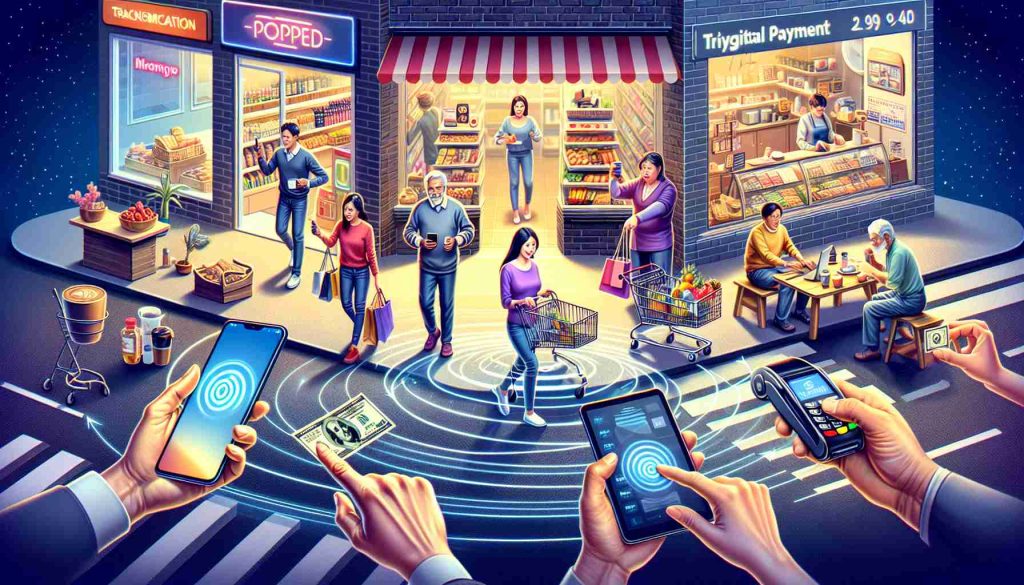
A significant shift is occurring in consumer payment habits, with an increasing number of individuals embracing digital payment methods in their daily lives. A recent survey conducted by a leading industry association revealed that 59% of respondents in Germany are now opting for contactless transactions using their smartphones or smartwatches. When including contactless card payments, a staggering 98% of individuals prefer this convenient payment method.
While these findings offer valuable insights, it is essential to approach them with caution and avoid overgeneralization. The survey results, based on a telephone poll of 1,005 individuals by Bitkom Research, may not represent a comprehensive scientific study. Such surveys are vulnerable to errors and biases, providing only a rough indication of consumer preferences.
The demand for electronic payment options is on the rise, with 73% of individuals advocating for all businesses in Germany to offer at least one electronic payment method alongside cash. Moreover, 76% of respondents express dissatisfaction when unable to make contactless payments at checkout counters. Even among older age groups traditionally more inclined towards cash transactions, 72% of individuals aged 65 and above feel inconvenienced by the lack of electronic payment options.
Contactless payments have become the norm across different age groups, signifying a shift towards digital transactions. Virtually all individuals aged 16-29 have made contactless payments using cards, smartphones, or smartwatches in the past year. The trend continues with 30-49-year-olds (100%), 50-64-year-olds (98%), and even seniors aged 65 and above (93%) embracing contactless payment methods. Notably, senior citizens exhibit a preference for card payments over smartphone or smartwatch transactions.
Despite the growing popularity of digital payments, concerns about increased spending when using electronic payment methods remain prevalent among consumers. While 62% anticipate reducing their cash usage in the future, around half of the respondents acknowledge a tendency to overspend when opting for electronic payments. Nevertheless, a considerable percentage (62%) claims they could easily do without cash in their daily transactions.
The Rise of Digital Payments in Everyday Life: Exploring Key Trends and Challenges
The surge in digital payment adoption continues to reshape consumer behaviors, with notable shifts in preferences and habits. While the previous article highlighted the increasing embrace of digital payment methods, several additional factors warrant attention in understanding this transformative trend.
What are the most pressing questions surrounding the rise of digital payments?
1. Security Concerns: One crucial question pertains to the security of digital payment platforms. As transactions move online and become more reliant on technology, how can users safeguard their sensitive financial information from potential threats like hacking and data breaches?
2. Financial Inclusion: Another key question revolves around ensuring equal access to digital payment solutions for all segments of society. How can we bridge the gap to ensure that individuals without access to traditional banking services can also benefit from the convenience of digital payments?
3. Regulatory Frameworks: Understanding the regulatory landscape governing digital payments is essential. How do existing regulations and emerging laws impact the expansion of digital payment ecosystems, and what measures are needed to ensure consumer protection and data privacy?
Key Challenges and Controversies:
1. Privacy Concerns: One of the primary challenges associated with digital payments is the potential compromise of user privacy. The collection and storage of personal data during transactions raise concerns about data misuse and tracking by corporations or third parties.
2. Infrastructure Readiness: The widespread adoption of digital payments requires robust infrastructure, including stable internet connectivity and reliable payment processing systems. In regions with limited access to such infrastructure, the transition to digital payments may face significant hurdles.
3. Consumer Education: Many consumers may still lack awareness of the intricacies of digital payment methods, such as how to set up secure payment profiles or recognize phishing attempts. Educating users about best practices and safety measures is crucial to prevent fraud and identity theft.
Advantages and Disadvantages:
1. Advantages: Digital payments offer unparalleled convenience, allowing users to make transactions anytime, anywhere. They also promote financial transparency, enabling individuals to track their spending and manage budgets more effectively. Additionally, digital payments can drive financial inclusion by providing access to financial services for underserved populations.
2. Disadvantages: Despite their benefits, digital payments pose certain risks, including potential cybersecurity threats and reliance on technology that may encounter glitches or outages. Moreover, the digital divide could exclude individuals without access to smartphones or internet connectivity, limiting their participation in the digital economy.
For further insights on the evolution of digital payments and their impact on consumer behaviors, you can explore resources from Finextra. This domain offers comprehensive coverage of financial technology trends and innovations shaping the digital payments landscape.





























